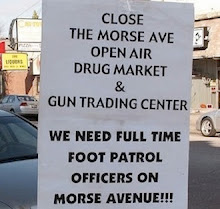Contact:
Motorcycle Industry Council
Media Relations
(949) 727-4211, ext. 3027
Motorcycle Industry Council and Specialty Vehicle Institute of America
INDIANAPOLIS, Feb. 12, 2009 – The Motorcycle Industry Council and the Specialty Vehicle Institute of America are doing all they can at Dealer Expo 2009, and at their offices, to help get youth ATVs and motorcycles back on showroom floors. The U.S. Government banned sales of many of these models, beginning on Tuesday, under the lead-content provisions of the Consumer Product Safety Improvement Act (CPSIA).
“We’re implementing a full court press at the Dealer Expo,” said Paul Vitrano, general counsel for the MIC and SVIA. “We are rallying everyone at Indy. Pre-printed letters to the Consumer Product Safety Commission, which can be signed and we’ll send in, will be available throughout the show. Computers will be available in the MIC business center so that dealers and exhibitors can easily make their opinions known to members of Congress.”
Everyone is encouraged to visit the Web site of Americans for Responsible Recreational Access, at www.ARRA-access.com, which features a letter generator for constituents to reach their own members of Congress. The MIC also is alerting stakeholders about a new Web site that state Rep. Tom Self of Missouri has launched in support of youth off-highway vehicles. The site, at www.tomself.com, offers e-mail templates to simplify sending messages to members of Congress with oversight of the CPSC.
For weeks, the MIC and SVIA have urged the CPSC to grant (and for members of Congress to support) petitions for temporary exclusions so that youth models could continue to be sold. The powersports industry demonstrated in the petitions, through the scientific analysis required by the CPSIA, that the lead-containing parts of youth ATVs and motorcycles pose no risk of increasing the lead levels in children aged 12 and younger.
On Feb. 5, the CPSC denied a request for an emergency stay, made by the National Association of Manufacturers CPSC Coalition, and joined by the MIC and SVIA. The CPSC stated that it did not have authority under the law to grant such a stay.
The Consumer Product Safety Improvement Act, however, includes provisions that enable the CPSC to grant exclusions for products on a case-by-case basis. The MIC and SVIA believe that the lead-content provisions of the act, which originally were aimed at toys that can be mouthed by children, were never intended to apply to youth ATVs and motorcycles.
On Feb. 10, the lead-content provisions of the CPSIA went into effect. Powersports companies are now prohibited from selling products that are intended primarily for youth, aged 12 and under, and having lead content in excess of the limits identified in the act.
The impact of this act is far-reaching. Applying the new lead-content regulations to youth models has resulted in many smaller models being unavailable to families, and could mean more children riding adult-only ATVs or dirt bikes that are too large for them.
Most of the components making up youth powersports products are in compliance. But some parts unavoidably contain small quantities of lead in excess of the CPSIA limits, such as the valve stems on the tires, the aluminum in some brake components and the terminals on the batteries. Lead in these components is necessary, either because small amounts of lead are needed for safety (such as machining the deep grooves on tire valves, which is needed to assure tire air retention) or functionality (such as the lead in battery terminals, which is needed to conduct electricity).
“It’s critical for everyone within the business, and for all of our customers, to step up and support the petitions now in front of the CPSC,” Vitrano said. “The ban is harming motorcycling and ATV riding right now. Dealernews has estimated that affected inventories could be more than $100 million. Kids don’t have a chance to get on the bikes and ATVs sized for them. We need the power and voice of the industry, as well as enthusiasts, to reinforce our concerns in Washington. We’re only asking for common-sense exclusions for powersports parts that simply do not present any risk to children in the real world. Kids don’t lick or eat ATV and motorcycle components.”
Since 1983, the Specialty Vehicle Institute of America® has promoted the safe and responsible use of All-Terrain Vehicles through rider training programs, public awareness campaigns, and state legislation. The SVIA also serves as a resource for ATV research, statistics, and vehicle standards. The SVIA, based in Irvine, Calif., is a not-for-profit trade association sponsored by Arctic Cat, BRP, CROSSRUNNER, Honda, Kawasaki, KTM, KYMCO, Polaris, Suzuki, Tomberlin and Yamaha. For membership information, call (949) 727-3727. For safety information or to enroll in the ATV RiderCourseSM nearest you, visit www.atvsafety.org and click on “Online Enrollment” or call (800) 887-2887.
The Motorcycle Industry Council exists to preserve, protect and promote motorcycling through government relations, communications and media relations, statistics and research, aftermarket programs, development of data communications standards, and activities surrounding technical and regulatory issues. It is a not-for-profit, national trade association representing manufacturers and distributors of motorcycles, scooters, motorcycle/ATV/ROV parts and accessories, and members of allied trades such as publishing companies, advertising agencies, insurance firms and consultants. The MIC is headquartered in Irvine, Calif., with a government relations office adjacent to Washington, D.C. First called the MIC in 1970, the organization has been in operation since 1914.
Saturday, February 14, 2009
Subscribe to:
Post Comments (Atom)


















No comments:
Post a Comment